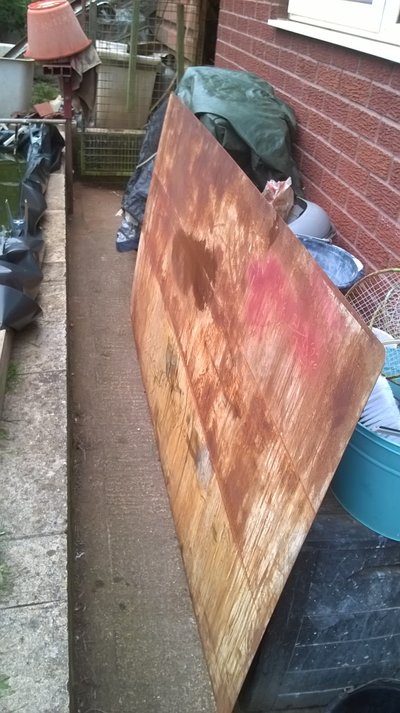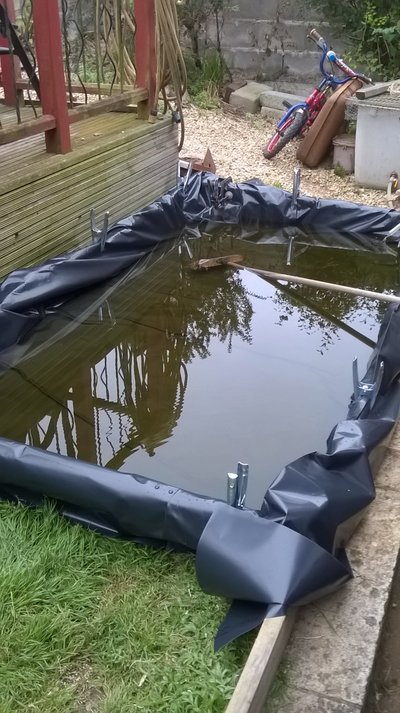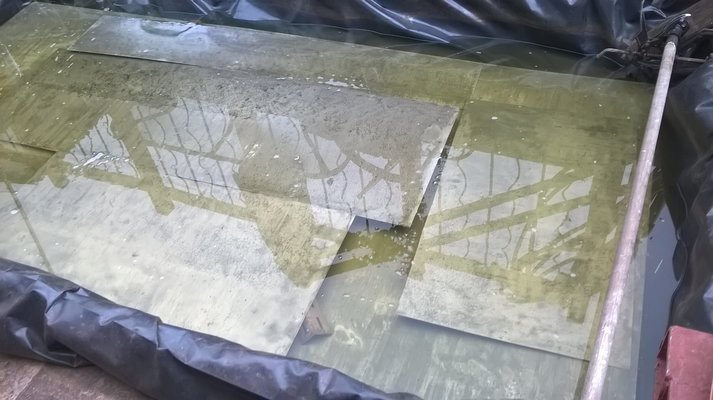RIP
Kairo
- Messages
- 3,031
- Location
- Netherlands
Today I tried a suggestion I had from Gateros Plating, which is to combine electrolytic cleaning with caustic soda to remove both paint and rust without having to heat the caustic soda (which apparently would be very dangerous). I set it up in a bucket, two bits of scrap for the anodes, and put in some caustic soda and washing soda and connected to a bench power supply. I put in a metal bracket from my 4x4 and left it for four hours. After four hours it was almost entirely stripped!
This bracket looks like it was cheaply painted, so I've yet to see how this method performs on parts that have been painted with more serious paint. On my next day off I'm going to upgrade from the bucket to a loft water tank, and put in the wishbones from my 4x4. I'll be curious if it cleans out the cavities and the very thick paint deep in the corners that the sand blaster couldn't remove.
Where the test bracket had rust, I was left with black reside which I took off with a scotchbrite sponge. Where there had been solid paint I was left with shiney metal.
Someone of this forum told me that this method causes high current draw. I've got a laboratory power supply, cost me £100, and it lets you limit the current.
This bracket looks like it was cheaply painted, so I've yet to see how this method performs on parts that have been painted with more serious paint. On my next day off I'm going to upgrade from the bucket to a loft water tank, and put in the wishbones from my 4x4. I'll be curious if it cleans out the cavities and the very thick paint deep in the corners that the sand blaster couldn't remove.
Where the test bracket had rust, I was left with black reside which I took off with a scotchbrite sponge. Where there had been solid paint I was left with shiney metal.
Someone of this forum told me that this method causes high current draw. I've got a laboratory power supply, cost me £100, and it lets you limit the current.





 .
.